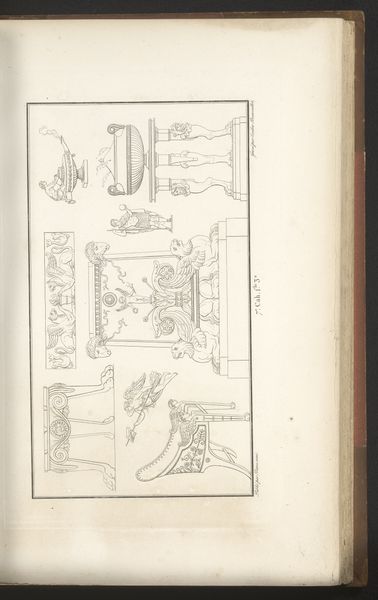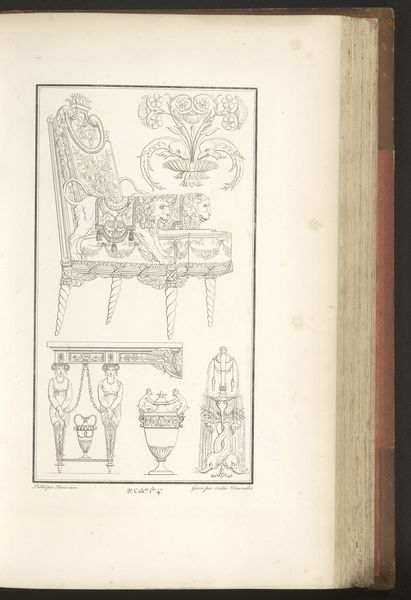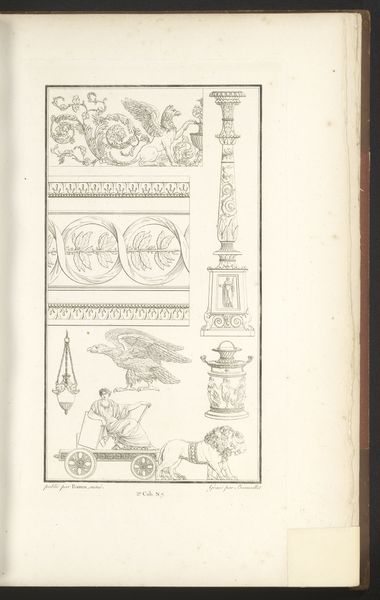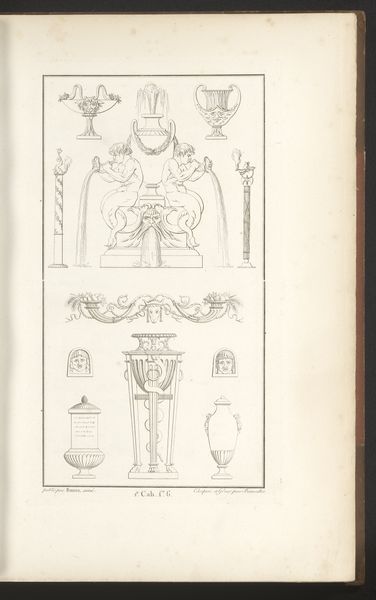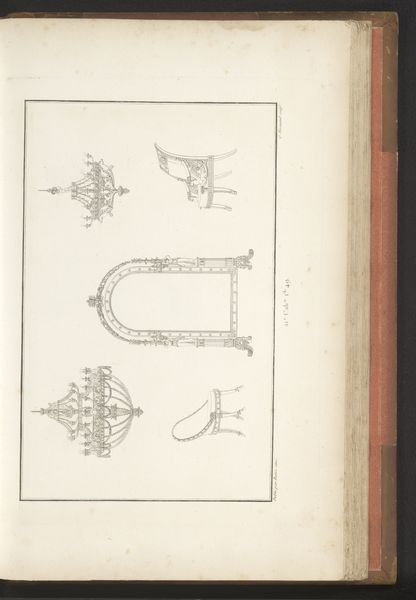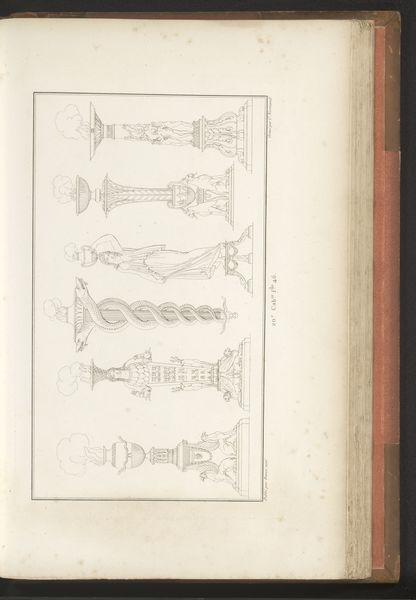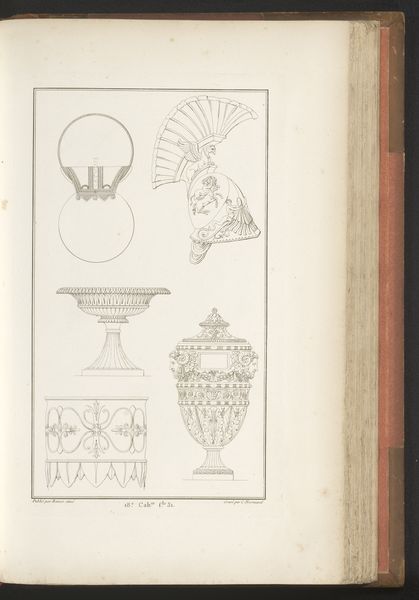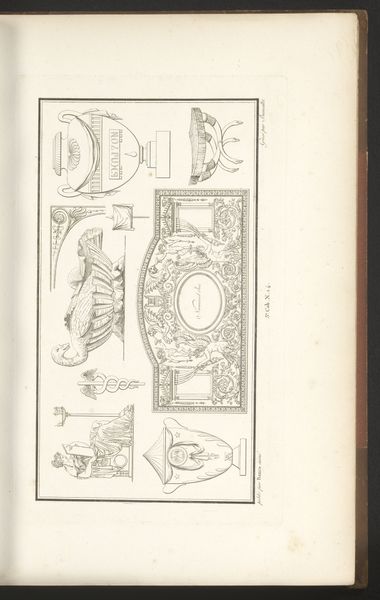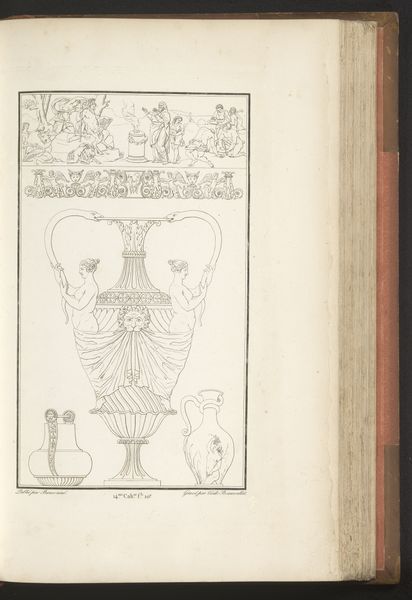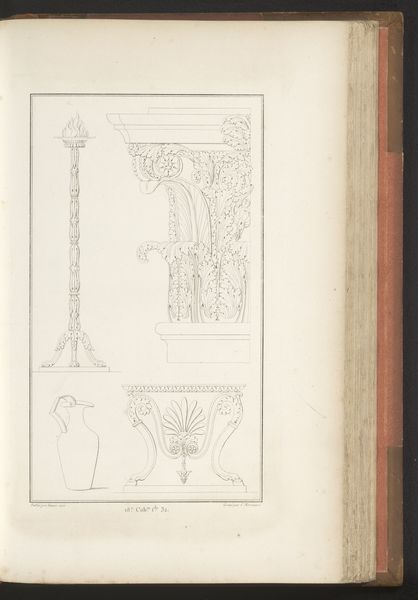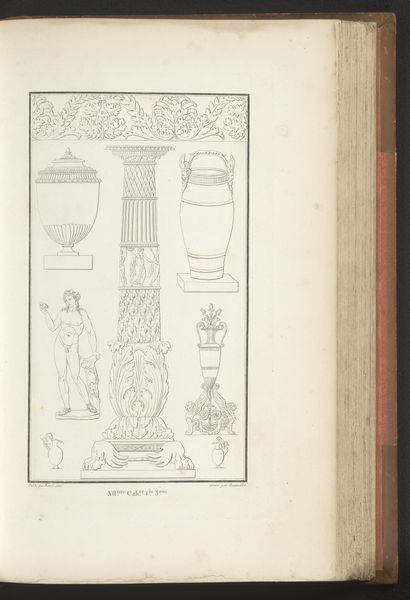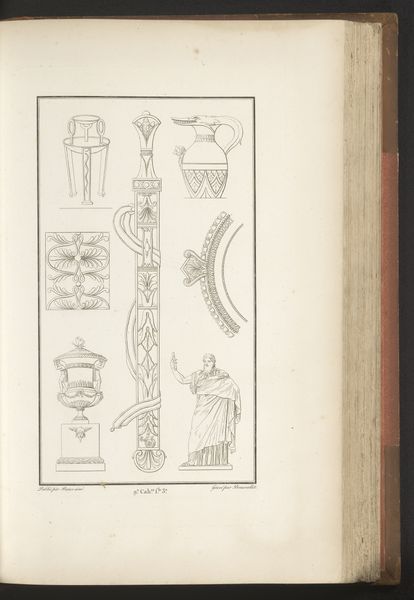
drawing, ink, engraving, architecture
#
drawing
#
neoclacissism
#
ink
#
decorative-art
#
engraving
#
architecture
Dimensions: height mm, width mm
Copyright: Rijks Museum: Open Domain
Curator: So, here we have "Egyptische figuren, bokalen, vazen en kandelaars," or "Egyptian figures, goblets, vases, and candlesticks," an ink and engraving drawing from 1820 by Pierre-Nicolas Beauvallet. It's giving me a rather...clinical feel, almost like an architect's inventory, yet with the whimsical touch of someone deeply inspired by ancient forms. What's your first impression? Editor: I agree about the clinical feeling. It’s very precise, very linear. What strikes me is the almost obsessive detail given to objects that probably didn’t exist, or certainly not together in this way. It's decorative, but feels removed from life. How would you contextualize this piece within its time? Curator: Ah, excellent question! Think Neoclassicism gone wild! The early 19th century was mad for the "exotic," and Egypt, recently re-discovered by Europe, was top of the pops. Beauvallet here isn't just drawing; he's inventing a sort of hyper-refined Egyptian-inspired aesthetic, almost a visual fantasy. Notice how these forms, vases, candlesticks, are elevated, almost deified by the figures surrounding them. Do you see any repetition that you might find important? Editor: I see several nudes used in what appear to be water fountains. Curator: You nailed it! There are nudes and urns galore, like a bizarre ballet of flesh and fancy! I suspect Beauvallet, much like many artists then and now, wasn’t really striving for historical accuracy, more like emotional and decorative accuracy, wouldn’t you say? It is all about affect after all! Editor: Absolutely. The emphasis feels less on historical truth and more on an idealized, imagined past, reshaped through a distinctly European lens. I can see how his choices blend in and deviate from the artistic conventions of the time. Curator: Indeed. It's a dialogue between past and present, reality and imagination. In other words: perfect for sparking discussion. Editor: This has given me much to consider about how historical periods shape the creation and interpretation of art, so thanks!
Comments
No comments
Be the first to comment and join the conversation on the ultimate creative platform.

